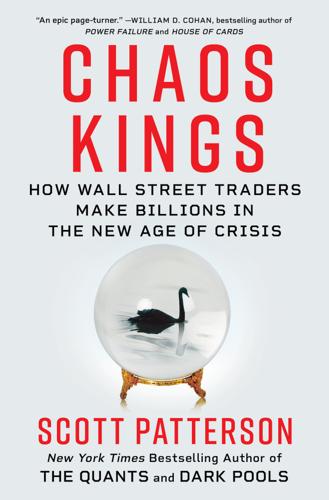
Chaos Kings: How Wall Street Traders Make Billions in the New Age of Crisis
by
Scott Patterson
Published 5 Jun 2023
Ackman wasn’t the only one who understood the nature of explosive exponential risk in early 2020—and the billions that could be made on it. Another trader, ensconced in the frozen woods of Northern Michigan that winter, had also made a giant bet on a crash. He was one of the original chaos kings. CHAPTER 1 BOOM! Mark Spitznagel stared at his computer screen in astonishment. It was early Monday morning, March 16, 2020. He couldn’t believe how dysfunctional markets around the world had become. Global markets had essentially died. Nothing was trading. Investors desperate to get out of their positions to avoid crushing losses couldn’t as everything from stocks to commodities to bonds crashed into the void.
…
The solution for Taleb: Don’t play in the systemic-risk casino. Avoid those dice. Don’t get on the plane if you have doubts about the pilot. Panic early. Apply the precautionary principle. In practical terms, don’t use borrowed money (or leverage) and protect yourself from major crashes. That was precisely what he’d done alongside Mark Spitznagel at Empirica. They crafted a trading machine that could never blow up. On the contrary, it thrived in blowups—it was, as Taleb later said, antifragile. Universa perfected the strategy. Are there lessons to be learned from these chaos kings about how to adapt to our world of mounting uncertainty and rising risks, some existential?
…
The birth of their strategy, for both Taleb and Spitznagel, occurred in the 1980s. For Taleb, it started with one of the biggest market blowups of modern times—Black Monday. For Spitznagel, it came from the wise advice of a veteran corn trader in the hard-charging trading pits of Chicago. CHAPTER 4 THE SIZZLER A riot of noise greeted Mark Spitznagel as he stepped into the visitors’ gallery of the Chicago Board of Trade’s cavernous Grain Room. It was the summer of 1987. The market was on a roll, and so was America. The Dow industrials closed above two thousand points for the first time. In Berlin, Ronald Reagan exhorted Mikhail Gorbachev to tear down this wall.
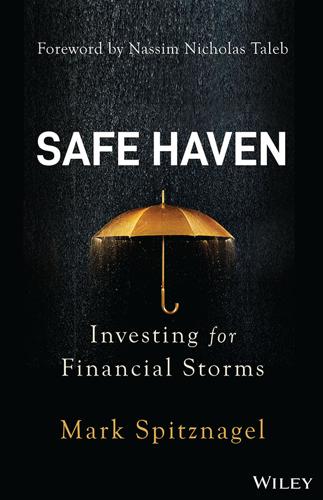
Safe Haven: Investing for Financial Storms
by
Mark Spitznagel
Published 9 Aug 2021
CASH IS KING GO WITH THE FLOW ALL THAT GLITTERS THE SAFE HAVEN FRONTIER WHISTLING PAST THE GRAVEYARD Afterword LOOKING BACK THE ONE, AND ONLY ONE, PATH THE WILLIAM TELL SHOT PIRATE TREASURE A FORMULA FOR GREATNESS “I HAVE FORGOTTEN MY UMBRELLA.” Acknowledgments Index End User License Agreement SAFE HAVEN Investing for Financial Storms MARK SPITZNAGEL Copyright © 2021 by Mark Spitznagel. All rights reserved. Published by John Wiley & Sons, Inc., Hoboken, New Jersey. Published simultaneously in Canada. No part of this publication may be reproduced, stored in a retrieval system, or transmitted in any form or by any means, electronic, mechanical, photocopying, recording, scanning, or otherwise, except as permitted under Section 107 or 108 of the 1976 United States Copyright Act, without either the prior written permission of the Publisher, or authorization through payment of the appropriate per‐copy fee to the Copyright Clearance Center, Inc., 222 Rosewood Drive, Danvers, MA 01923, (978) 750‐8400, fax (978) 750‐4470, or on the web at www.copyright.com.
…
It is one thing to commit spontaneous grandiose acts of courage, risk one's life for the sake of a grand cause, become a hero in battle, drink the hemlock for the sake of the philosophical death, become a martyr by standing tall while being maimed by lions in the Roman Coliseum. But it is much, much harder to persevere with no promise of vindication, while living the daily grind of humiliation by one's peers. Acute pain goes away; dull pain is vastly harder to bear, and vastly more heroic. SPITZ I have known Mark Spitznagel for long enough (more than two decades) to remember that he was once, briefly, a vegetarian, perhaps after reading Herman Hesse's Siddhartha in which the protagonist claims: “I can think, I can wait, I can fast.” My suggestion to follow the Greek Orthodox fast, where one is vegan two‐thirds of the year (and aggressively carnivore on the other third, mostly Sundays and holidays), failed to convince.
…
Much more recently, Ole Peters has written exhaustive and insightful papers on non‐ergodicity's implications for economic theory. And, of course, Nassim Taleb took up the point in his 2018 book Skin in the Game of the non‐ergodicity of the one‐period ensemble average versus the multi‐period time average. (As Nassim wrote, “more than two decades ago, practitioners such as Mark Spitznagel and myself built our entire business careers around…the effect of the difference between ensemble and time.” That pretty much sums it up.) For a good, not‐too‐technical read on all of this, see the 2005 book Fortune's Formula by William Poundstone; by 2005 I had already long been up to my neck in all of this, and yet it further opened my eyes to the implications of this simple distinction.
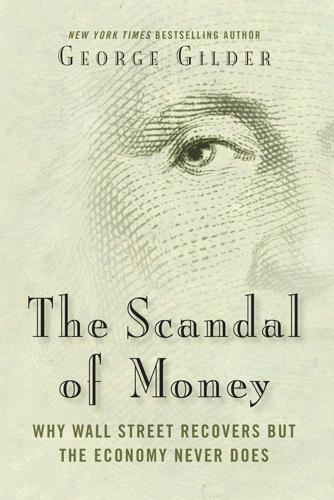
The Scandal of Money
by
George Gilder
Published 23 Feb 2016
Citing a National Bureau of Economic Research paper, Samuelson reports a “double-whammy”: a 37 percent decline in the proportion of start-ups—from 13 percent of all firms in the late 1980s to 8 percent in 2011—and a decline in their rate of growth to a level below the growth rate of older companies, which in turn have slowed their investment in new plants and equipment. He concludes, “Compared to the past, companies seem more reluctant to invest in the future.” 3.Nassim Nicholas Taleb and Mark Spitznagel, in a blog post at CNN’s Global Public Square from October 2012, estimate that $2.2 trillion was paid to bankers, chiefly in bonuses, in the United States alone between June 2000 and June 2007, and they project the total to rise to (very roughly) $5 trillion over the course of the decade. “Bankers used leverage to increase profitability and exploited the backstop of public guarantees.
…
Economic Prospects: Secular Stagnation, Hysteresis, and the Zero Lower Bound,” keynote address, National Association of Business Economists’ Policy Conference, February 24, 2014, which focuses on the impotence of expansionary monetary policy when interest rates approach zero. 7.Peter Thiel with Blake Masters, Zero to One: Notes on Startups, or How to Build the Future (New York, NY: Crown Business, 2014), 193. For my time-sensitive money, this is the most original and interesting book ever written on business strategy. (Its chief rival is the more technical Innovators’ Dilemma by Clayton Christensen.) 8.Nassim Nicholas Taleb and Mark Spitznagel, “The Great Bank Robbery,” Global Public Square, CNN, October 2011. 9.David Malpass, speech to the Needham Growth Conference, New York, January 15, 2015. As Malpass points out, zero interest rates mean free money, and “when anything is free it is allocated by queue and only the privileged folk at the front of the line get any.” 10.Charles Gave, “Poverty Matters for Capitalists,” GavekalDragonomics (Hong Kong: Gavekal Global Research, July 9, 2014), 1–6.
…
The figures on jobs contribution from venture capital vary from 11 percent to 17 percent, but since the epochs of slavery and socialism all jobs have stemmed from the process of knowledge accumulation and learning, which is the focus of venture investment. 3.Charles Gave, “Indexation=Parasitism,” GavekalDragonomics (Hong Kong: Gavekal Research, July 15, 2014), 1. 4.John C. Bogle, The Clash of Cultures: Investment vs. Speculation (New York, NY: John Wiley and Sons, 2012). Bogle astonishingly sees the culture of investment as index funds and the culture of speculation as actively managed capital. 5.Nassim Nicholas Taleb and Mark Spitznagel, blog post, Global Public Square, CNN, October 2012. 6.Ibid. 7.Robert Laughlin, A Different Universe (New York, NY: Basic Books, 2006). 8.Robert J. Gordon, The Rise and Fall of American Growth: The U.S. Standard of Living since the Civil War (Princeton, NJ: Princeton University Press, 2016). 9.Walter Bagehot, Lombard Street: A Description of the Money Market (London: Henry S.

Fooled by Randomness: The Hidden Role of Chance in Life and in the Markets
by
Nassim Nicholas Taleb
Published 1 Jan 2001
Elie Ayache, another Levantine-tradder-mathematician-physicist-turned-philosopher-of-science-probability-markets (though without the neurobiology), made me spend numerous hours at Borders Books in both the philosophy section and the science section. Flavia Cymbalista, Sole Marittimi (now Riley), Paul Wilmott, Mark Spitznagel, Gur Huberman, Tony Glickman, Winn Martin, Alexander Reisz, Ted Zink, Andrei Pokrovsky, Shep Davis, Guy Riviere, Eric Schoenberg, and Marco Di Martino provided comments on the text. George Martin was, as usual, an invaluable sounding board. The readers Carine Chichereau, Bruce Bellner, and Illias Katsounis, gracefully e-mailed me extensive errata.
…
If you do not feel that you are going anywhere, your emotions will cause you to become demoralized. But reality rarely gives us the privilege of a satisfying linear positive progression: You may study for a year and learn nothing, then, unless you are disheartened by the empty results and give up, something will come to you in a flash. My partner Mark Spitznagel summarizes it as follows: Imagine yourself practicing the piano every day for a long time, barely being able to perform “Chopsticks,” then suddenly finding yourself capable of playing Rachmaninov. Owing to this nonlinearity, people cannot comprehend the nature of the rare event. This summarizes why there are routes to success that are nonrandom, but few, very few, people have the mental stamina to follow them.
…
This book was written and finished after I founded Empirica, my intellectual home, “Camp Empirica,” in the woods in the back country of Greenwich, Connecticut, which I designed to fit my taste and feel like a hobby: a combination of an applied probability research laboratory, athletic summer camp, and, not least, a trading operation (I had experienced one of my best professional years while writing these lines). I thank all the like-minded people who helped fuel the stimulating atmosphere there: Pallop Angsupun, Danny Tosto, Peter Halle, Mark Spitznagel, Yuzhao Zhang, and Cyril de Lambilly as well as the members of Paloma Partners such as Tom Witz, who challenged our wisdom on a daily basis, and Donald Sussman, who supplied me with his penetrating judgment. A TRIP TO THE LIBRARY Notes and Reading Recommendations NOTES I confess that, as a practitioner of randomness, I focused primarily on the defects of my own thinking (and that of a few people I’ve observed or tracked through time).
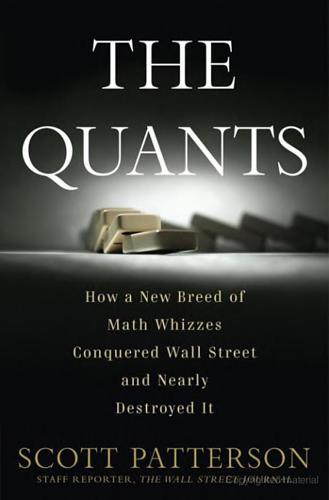
The Quants
by
Scott Patterson
Published 2 Feb 2010
The Truth was very simple, and remorseless as the driving force of any cutthroat Wall Street banker: Did you make money, or not? Nothing else mattered. Meanwhile, a fund with ties to Nassim Taleb, Universa Investments, was also hitting on all cylinders. Funds run by Universa, managed and owned by Taleb’s longtime collaborator Mark Spitznagel, gained as much as 150 percent in 2008 on its bet that the market is far more volatile than most quant models predict. The fund’s Black Swan Protocol Protection plan purchased far-out-of-the-money put options on stocks and stock indexes, which paid off in spades after Lehman collapsed as the market tanked.
…
But one evening a colleague: “Going Under, Happily,” by Pete Muller as told to Loch Adamson, New York Times, June 8, 2003. In May 2002, he attended the wedding: The wedding account is based on interviews with Nassim Taleb, John Liew, and Neil Chriss. His peripatetic life had shown him: The brief account of Taleb’s life is based on numerous interviews with Taleb and his longtime trading partner Mark Spitznagel, as well as the articles “Blowing Up: How Nassim Taleb Turned the Inevitability of Disaster into an Investment Strategy,” by Malcolm Gladwell, New Yorker, April 22 and 29, 2002, and “Flight of the Black Swan,” by Stephanie Baker-Said, Bloomberg Markets, May 2008. Once or twice a month: The subjects of this book did not discuss this poker game often.
…
Thanks to my editors at The Wall Street Journal, particularly Jon Hilsenrath and Nik Deogun, who encouraged my interest in writing about this strange group of traders; and Anita Raghavan, who helped me crack open the quant group at Morgan Stanley. A virtual army of traders and professors helped me better understand the world of the quants, including Mark Spitznagel, Nassim Taleb, Paul Wilmott, Emanuel Derman, Aaron Brown, Benoit Mandelbrot, and so many others. Ed Thorp devoted far too much time to help me understand the true nature of trading and risk management, as well as his own amazing career. As promised, I’d like to thank ANONYMOUS. Mostly, I thank my wife, Eleanor, whose understanding, patience, and constant encouragement over the past few years made this book possible.
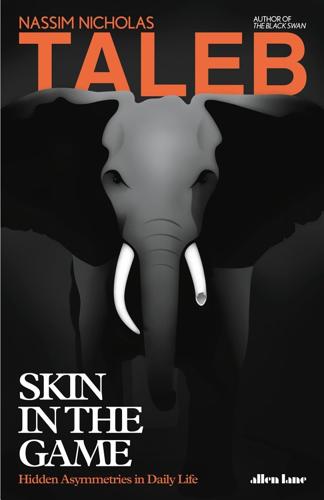
Skin in the Game: Hidden Asymmetries in Daily Life
by
Nassim Nicholas Taleb
Published 20 Feb 2018
Not quite: every economist maybe, but not everyone: the applied mathematicians Claude Shannon and Ed Thorp, and the physicist J. L. Kelly of the Kelly Criterion got it right. They also got it in a very simple way. The father of insurance mathematics, the Swedish applied mathematician Harald Cramér, also got the point. And, more than two decades ago, practitioners such as Mark Spitznagel and myself built our entire business careers around it. (I mysteriously got it right in my writings and when I traded and made decisions, and detect deep inside when ergodicity is violated, but I never explicitly got Peters and Gell-Mann’s mathematical structure—ergodicity is even discussed in Fooled by Randomness, two decades ago).
…
Acknowledgments Ralph Nader; Ron Paul; Will Murphy (editor, advisor, proofreader, syntax expert and specialist); Ben Greenberg (editor); Casiana Ionita (editor); Molly Turpin; Mika Kasuga; Evan Camfield; Barbara Fillon; Will Goodlad; Peter Tanous; Xamer ‘Bou Assaleh; Mark Baker (aka Guru Anaerobic); Armand d’Angour; Alexis Kirschbaum; Max Brockman; Russell Weinberger; Theodosius Mohsen Abdallah; David Boxenhorn; Marc Milanini; ETH participants in Zurich; Kevin Horgan; Paul Wehage; Baruch Gottesman, Gil Friend, Mark Champlain, Aaron Elliott, Rod Ripamonti, and Zlatan Hadzic (all on religion and sacrifice); David Graeber (Goldman Sachs); Neil Chriss; Amir-Reza Amini (automatic cars); Ektrit Kris Manushi (religion); Jazi Zilber (particularly Rav Safra); Farid Anvari (U.K. scandal); Robert Shaw (shipping and risk sharing); Daniel Hogendoorn (Cambyses); Eugene Callahan; Jon Elster, David Chambliss Johnson, Gur Huberman, Raphael Douady, Robert Shaw, Barkley Rosser, James Franklin, Marc Abrahams, Andreas Lind, and Elias Korosis (all on paper); John Durant; Zvika Afik; Robert Frey; Rami Zreik; Joe Audi; Guy Riviere; Matt Dubuque; Cesáreo González; Mark Spitznagel; Brandon Yarkin; Eric Briys; Joe Norman; Pascal Venier; Yaneer Bar-Yam; Thibault Lécuyer; Pierre Zalloua; Maximilian Hirner; Aaron Eliott; Jaffer Ali; Thomas Messina; Alexandru Panicci; Dan Coman; Nicholas Teague; Magued Iskander; Thibault Lécuyer; James Marsh; Arnie Schwarzvogel; Hayden Rei; John Mast-Finn; Rupert Read; Russell Roberts; Viktoria Martin; Ban Kanj Elsabeh; Vince Pomal; Graeme Michael Price; Karen Brennan; Jack Tohme; Marie-Christine Riachi; Jordan Thibodeau; Pietro Bonavita.
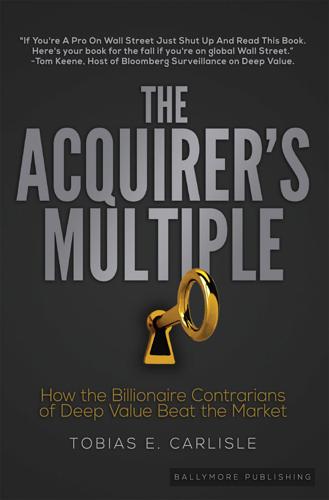
The Acquirer's Multiple: How the Billionaire Contrarians of Deep Value Beat the Market
by
Tobias E. Carlisle
Published 13 Oct 2017
We’ll look at the details of actual stock picks by billionaire deep-value investors: •Warren Buffett •Carl Icahn •Daniel Loeb •David Einhorn We’ll see the strategies of Buffett and his teacher, Benjamin Graham, and other contrarians, including: •billionaire trader Paul Tudor-Jones •venture capitalist billionaire Peter Thiele •global macroinvestor billionaire Michael Steinhardt •billionaire tail-risk hedger Mark Spitznagel I wrote this book so you can read it in a couple of hours. It’s written for my kids, family, and friends, for people who are smart but not stock-market people. That means it’s written in plain English. Where I need to define a stock-market term, I’ve tried to do it as simply as possible. And this book is packed with charts and drawings explaining why it’s important to zig when the crowd zags.
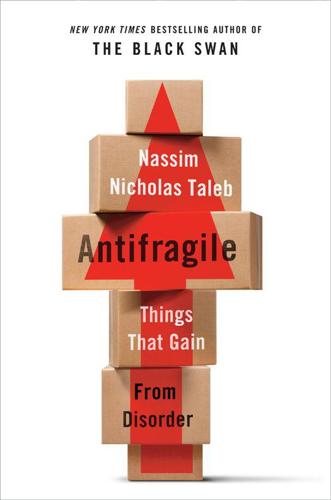
Antifragile: Things That Gain From Disorder
by
Nassim Nicholas Taleb
Published 27 Nov 2012
Generous comments and help: Peter Nielsen, Rory Sutherland, Saifedean Ammous, Max Brockman, John Brockman, Marcos Carreira, Nathan Myhrvold, Aaron Brown, Terry Burnham, Peter Boettke, Russ Roberts, Kevin Horgan, Farid Karkaby, Michael Schrague, Dan Goldstein, Marie-Christine Riachi, Ed Frankel, Mika Kasuga, Eric Weinstein, Emanuel Derman, Alberto Mingardi, Constantine Sandis, Guy Deutscher, Bruno Dupire, George Martin, Joelle Weiss, Rohan Silva, Janan Ganesh, Dan Ariely, Gur Huberman, Cameron Williams, Jacques Merab, Lorenzo Savorelli, Andres Velasco, Eleni Panagiotarakou, Conrad Young, Melik Keylan, Seth Roberts, John McDonald, Yaneer Bar-Yam, David Shaywitz, Nouriel Roubini, Philippe Asseily, Ghassan Bejjani, Alexis Grégoire Saint-Marie, Charles Tapiero, Barry Blecherman, Art De Vany, Guy Riviere, Bernard Oppetit, Brendon Yarkin, and Mark Spitznagel; and my online helpers Jean-Louis Reault, Ben Lambert, Marko Costa, Satiyaki Den, Kenneth Lamont, Vergil Den, Karen Brennan, Ban Kanj, Lea McKay, Ricardo Medina, Marco Alves, Pierre Madani, Greg Linster, Oliver Mayor, Satyaki Roy, Daniel Hogendoorn, Phillip Crenshaw, Walter Marsh, John Aziz, Graeme Blake, Greg Linster, Sujit Kapadia, Alvaro De La Paz, Apoorv Bajpai, Louis Shickle, Ben Brady, Alfonso Payno de las Cuevas, “Guru Anaerobic,” Alexander Boland, David Boxenhorn, Dru Stevenson, and Michal Kolano.

The Price of Time: The Real Story of Interest
by
Edward Chancellor
Published 15 Aug 2022
Ben Bernanke, ‘The Fed’s Shifting Perspective on the Economy and Its Implications for Monetary Policy’, Brookings, 8 August 2016. 53. Lukasz Rachel and Thomas D. Smith, ‘Secular Drivers of the Global Real Interest Rate’, Bank of England, December 2015. 54. Schumpeter, Capitalism, Socialism and Democracy, p. 82. 55. Mark Spitznagel, The Dao of Capital: Austrian Investing in a Distorted World (Hoboken, NJ, 2013), p. 42. 56. Jason Scott Johnston and Jonathan Klick, ‘Fire Suppression Policy, Weather, and Western Wildland Fire Trends: An Empirical Analysis’, in Wildfire Policy: Law and Economics Perspectives, eds. Dean Lueck and Karen M.